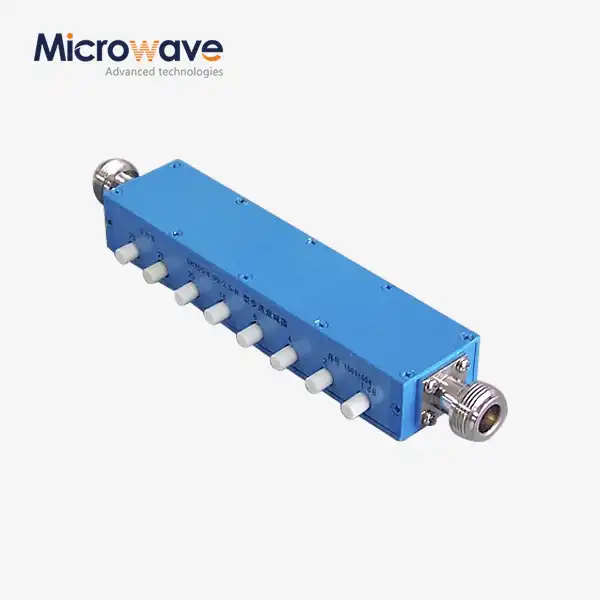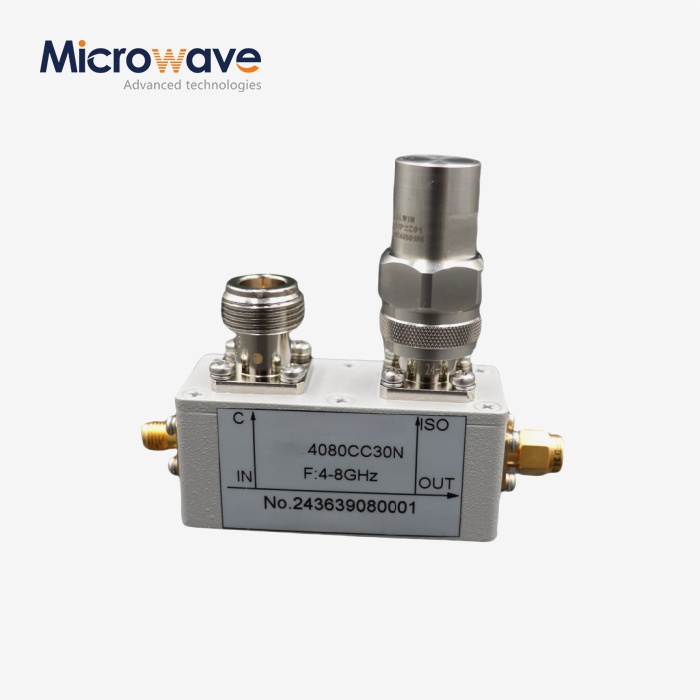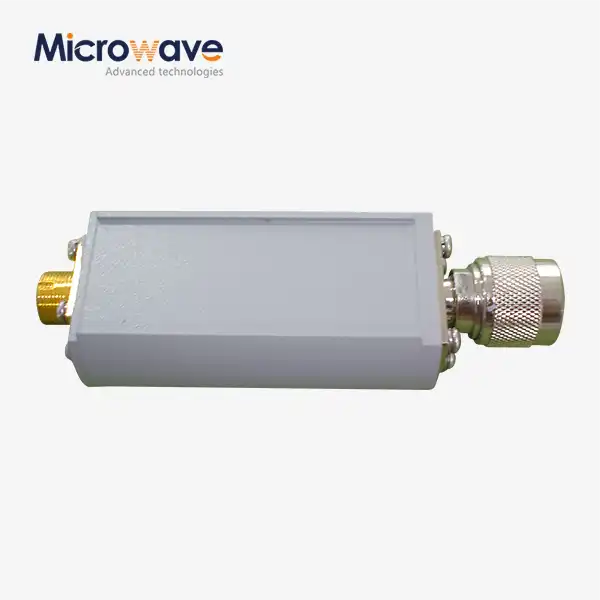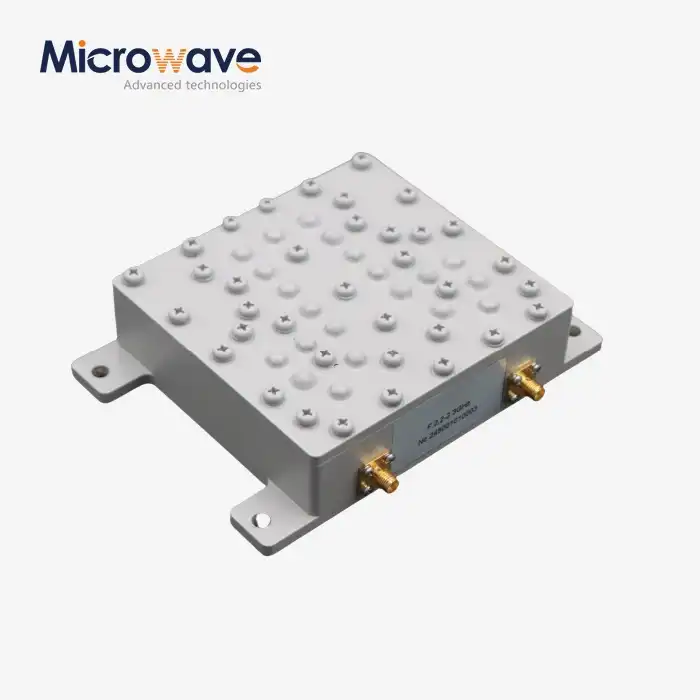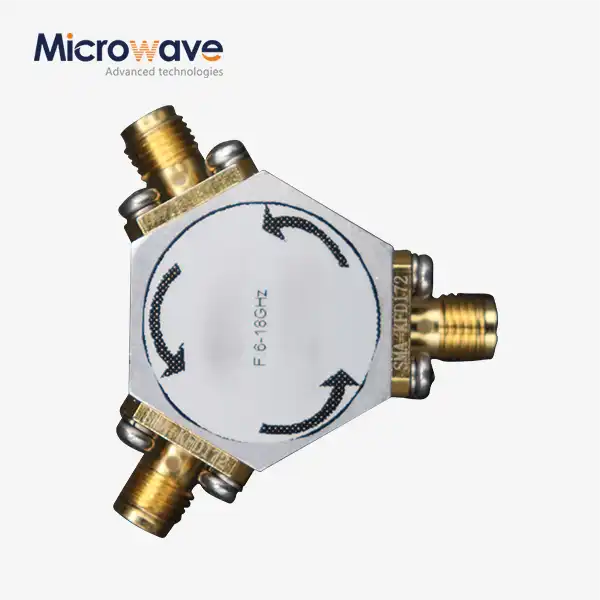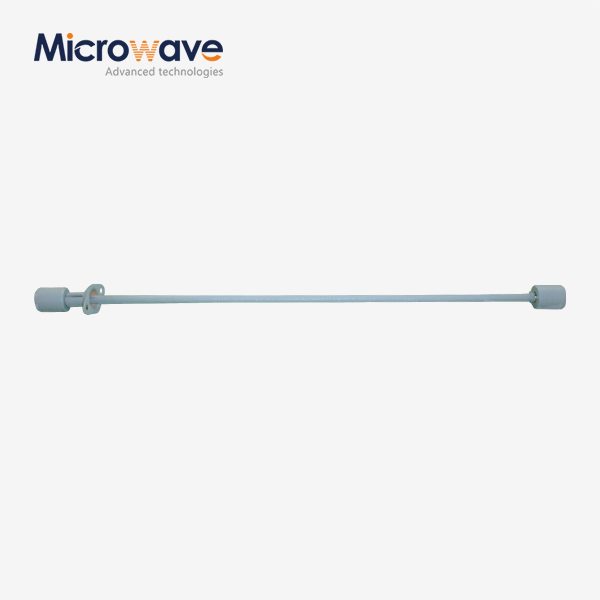How to Select the Right Waveguide Single Channel Rotary Joint for Your System?
Selecting the appropriate Waveguide Single Channel Rotary Joint for your system demands careful consideration of multiple technical parameters and application requirements. These sophisticated microwave components serve as critical interfaces between rotating and stationary RF systems, enabling seamless signal transmission in demanding environments across satellite communications, defense, aerospace, and navigation applications. The selection process involves evaluating frequency ranges, power handling capabilities, environmental specifications, and mechanical configurations to ensure optimal performance and reliability for your specific operational needs.
Understanding Key Technical Specifications for Optimal Selection
Frequency Range and Performance Characteristics
When selecting a Waveguide Single Channel Rotary Joint, the frequency range represents the fundamental specification that determines system compatibility and performance. Modern rotary joints typically support frequencies up to 40 GHz, making them suitable for cutting-edge communication systems and next-generation radar applications. The frequency response directly impacts signal integrity, with higher frequencies requiring more precise engineering tolerances and advanced materials to maintain low insertion loss characteristics. Advanced Microwave Technologies Co., Ltd designs rotary joints with meticulous attention to frequency-dependent parameters, ensuring that the Waveguide Single Channel Rotary Joint maintains consistent performance across the entire operational bandwidth. The insertion loss specification, typically less than 0.3 dB, becomes increasingly critical at higher frequencies where signal degradation can significantly impact system performance. Engineers must consider not only the nominal frequency range but also the frequency response flatness, which affects signal quality in broadband applications. The VSWR specification, maintained below 1.25:1, indicates how well the rotary joint matches the characteristic impedance of the connected waveguide system, preventing reflections that could degrade signal quality or damage sensitive equipment.
Power Handling and Thermal Management
Power handling capability represents another crucial specification when selecting a Waveguide Single Channel Rotary Joint for high-power applications. The continuous wave (CW) power rating determines the maximum signal power that the rotary joint can handle without performance degradation or physical damage. Peak power handling becomes particularly important in radar applications where high-power pulses are transmitted through the system. Thermal management considerations include the operating temperature range, typically from -40°C to +85°C, which ensures reliable operation across diverse environmental conditions. The thermal expansion characteristics of materials used in the Waveguide Single Channel Rotary Joint construction directly affect mechanical tolerances and electrical performance over temperature variations. Heat dissipation mechanisms become critical in high-power applications, where inadequate thermal management can lead to performance drift or component failure. Advanced materials and engineering techniques employed by manufacturers like Advanced Microwave Technologies Co., Ltd ensure that thermal effects are minimized through careful material selection and thermal design optimization. The temperature coefficient of electrical performance parameters helps predict system behavior under varying thermal conditions, enabling engineers to implement appropriate compensation strategies.

Mechanical Configuration and Design Considerations
The mechanical configuration of a Waveguide Single Channel Rotary Joint significantly influences its integration into existing systems and operational reliability. Three primary configurations are available: I-Type with both linear arms aligned with the rotation axis, L-Type with one arm perpendicular to the rotation axis, and U-Type with both arms perpendicular to the rotation axis. Each configuration offers distinct advantages depending on the specific application requirements and system layout constraints. The compact design philosophy ensures easy integration into various systems, from telecommunications equipment to sophisticated radar installations. Precision engineering standards guarantee minimal signal degradation and high performance consistency, even under demanding operational conditions. The mechanical bearing system determines the rotational smoothness and longevity of the Waveguide Single Channel Rotary Joint, with advanced bearing technologies providing extended operational life and reduced maintenance requirements. Customizable flange connections accommodate various waveguide standards and system interfaces, ensuring seamless integration with existing infrastructure. The mechanical stability under rotation affects RF performance, making it essential to consider bearing quality, alignment precision, and structural rigidity in the selection process.
Application-Specific Requirements and Environmental Considerations
Satellite Communication System Integration
Satellite communication systems impose unique requirements on Waveguide Single Channel Rotary Joint selection, demanding exceptional reliability and performance stability over extended operational periods. Ground station applications require rotary joints that can maintain signal integrity while tracking satellites across the sky, necessitating smooth rotation characteristics and consistent RF performance throughout the full rotation range. The space environment presents additional challenges for satellite-mounted applications, where extreme temperature variations, radiation exposure, and vacuum conditions demand specialized materials and construction techniques. Signal transmission quality becomes paramount in satellite communications, where the Waveguide Single Channel Rotary Joint must maintain low insertion loss and excellent VSWR characteristics to preserve link margins and ensure reliable communication. The rotary joint must accommodate the mechanical requirements of antenna positioning systems while providing stable electrical performance across all operational positions. Environmental sealing becomes critical in outdoor ground station installations, where moisture ingress and contamination can severely impact performance. Advanced Microwave Technologies Co., Ltd addresses these challenges through rigorous testing and qualification procedures, ensuring that their Waveguide Single Channel Rotary Joint products meet the stringent requirements of satellite communication applications. The long-term reliability requirements of satellite systems demand components with proven track records and comprehensive quality assurance programs.
Defense and Aerospace Applications
Defense and aerospace applications place extraordinary demands on Waveguide Single Channel Rotary Joint performance, requiring components that can operate reliably under extreme conditions while maintaining mission-critical functionality. Military radar systems utilize rotary joints in antenna positioning systems, where precise tracking and target identification depend on consistent RF performance throughout the rotation cycle. The harsh operational environments encountered in defense applications, including temperature extremes, vibration, shock, and electromagnetic interference, necessitate robust construction and proven reliability. Aerospace applications demand components that can withstand the unique challenges of airborne and space-based systems, including altitude variations, pressure changes, and extended operational periods without maintenance. The Waveguide Single Channel Rotary Joint must maintain stable performance characteristics under these demanding conditions while providing the high-frequency capabilities required for modern defense systems. Security considerations in defense applications require components from trusted suppliers with established track records and appropriate certifications. The precision engineering standards employed in manufacturing ensure that performance specifications are maintained throughout the operational life of the system. Advanced testing procedures verify performance under simulated operational conditions, providing confidence in mission-critical applications where failure is not an option.
Telecommunications and Navigation Systems
Telecommunications infrastructure relies heavily on Waveguide Single Channel Rotary Joint components for base station antennas and point-to-point communication links, where reliability and performance directly impact service quality and network availability. The demanding requirements of modern telecommunications systems include support for multiple frequency bands, high data rates, and continuous operation under varying environmental conditions. Network reliability depends on the consistent performance of critical components like rotary joints, where failures can result in service disruptions and significant economic impact. The Waveguide Single Channel Rotary Joint must provide stable electrical characteristics while accommodating the mechanical requirements of antenna positioning and tracking systems. Navigation systems utilize rotary joints in radar equipment and directional antennas, where precise positioning and signal integrity are essential for accurate position determination and navigation assistance. The integration of rotary joints into telecommunications equipment requires careful consideration of size constraints, weight limitations, and electrical interface requirements. Advanced Microwave Technologies Co., Ltd provides comprehensive technical support to ensure proper integration and optimal performance in telecommunications applications. The scalability of rotary joint solutions allows for deployment across various telecommunications platforms, from small base stations to large communication hubs, while maintaining consistent performance standards.
Quality Assurance and Manufacturing Excellence
ISO Certification and Quality Standards
The quality assurance framework surrounding Waveguide Single Channel Rotary Joint manufacturing directly impacts product reliability and customer satisfaction. ISO 9001:2015 certification demonstrates a manufacturer's commitment to quality management systems and continuous improvement processes. This standard ensures that design, development, manufacturing, and delivery processes meet strict quality control procedures throughout the product lifecycle. The implementation of comprehensive quality management systems provides customers with confidence that each Waveguide Single Channel Rotary Joint undergoes rigorous testing and validation before delivery. Advanced Microwave Technologies Co., Ltd maintains ISO 9001:2015 certification, demonstrating their dedication to quality excellence and customer satisfaction. The quality control procedures encompass raw material inspection, in-process monitoring, and final product testing to ensure compliance with specifications and performance requirements. Statistical process control techniques help identify and eliminate sources of variation, resulting in consistent product quality and reliable performance. The continuous improvement philosophy embedded in ISO 9001 systems drives ongoing enhancements in manufacturing processes and product design, benefiting customers through improved reliability and performance.
Environmental and Safety Compliance
Environmental stewardship and safety considerations play increasingly important roles in Waveguide Single Channel Rotary Joint manufacturing and deployment. ISO 14001:2015 environmental management certification demonstrates a manufacturer's commitment to minimizing environmental impact throughout their operations. This includes responsible waste management, energy conservation, and emission reduction initiatives that benefit both the environment and operational efficiency. The use of RoHS-compliant materials ensures that products meet international standards for hazardous substance restrictions, supporting global deployment and regulatory compliance. ISO 45001:2018 occupational health and safety certification reflects a manufacturer's commitment to employee welfare and safe working conditions. These certifications collectively demonstrate a comprehensive approach to responsible manufacturing that extends beyond product quality to encompass environmental and social responsibility. The Waveguide Single Channel Rotary Joint products benefit from these systematic approaches through improved manufacturing processes, enhanced quality control, and reduced environmental impact. Customers increasingly value suppliers who demonstrate commitment to environmental and safety standards, making these certifications important differentiators in the marketplace. The integration of environmental and safety considerations into product design and manufacturing processes results in more sustainable and responsible solutions.

Advanced Testing and Validation Procedures
Comprehensive testing and validation procedures ensure that Waveguide Single Channel Rotary Joint products meet performance specifications and reliability requirements under real-world operating conditions. Advanced Microwave Technologies Co., Ltd operates sophisticated testing facilities, including a 24-meter microwave darkroom equipped with antenna plane near and far field measuring recombination chambers. This state-of-the-art facility enables precise measurement of RF performance parameters across the frequency range from 0.5 to 110 GHz. The extensive testing capabilities ensure that each Waveguide Single Channel Rotary Joint undergoes rigorous validation before delivery to customers. Environmental testing procedures simulate operational conditions, including temperature cycling, humidity exposure, vibration, and shock testing to verify performance under demanding conditions. The combination of electrical and mechanical testing provides comprehensive validation of product performance and reliability. Statistical analysis of test results helps identify potential issues and optimize design parameters for improved performance. The testing protocols comply with relevant industry standards and customer specifications, ensuring that products meet or exceed performance requirements. Continuous investment in testing equipment and procedures enables manufacturers to stay current with evolving technology requirements and customer expectations.
Conclusion
Selecting the right Waveguide Single Channel Rotary Joint requires careful evaluation of technical specifications, application requirements, and quality standards. The decision process must consider frequency range, power handling, environmental conditions, and mechanical configuration to ensure optimal system performance. Advanced Microwave Technologies Co., Ltd provides comprehensive solutions backed by rigorous testing and quality assurance programs to meet diverse customer requirements.
As a leading China Waveguide Single Channel Rotary Joint factory and trusted China Waveguide Single Channel Rotary Joint supplier, Advanced Microwave Technologies Co., Ltd offers unparalleled expertise in microwave component manufacturing. Our position as a premier China Waveguide Single Channel Rotary Joint manufacturer is built on over 20 years of experience and continuous innovation in microwave technology. We provide comprehensive China Waveguide Single Channel Rotary Joint wholesale solutions with custom OEM services, rapid prototyping capabilities, and extensive technical support. Our advantages include a perfect supply chain system, rich production experience, professional technical R&D team, fast delivery, competitive pricing, strict quality control, and strong after-sales capability. Our laboratories are equipped with advanced microwave measurement equipment up to 110 GHz, and our products are ISO:9001:2008 certified and RoHS compliant. Whether you're a large multinational corporation or a small R&D-driven company, we provide high-quality products and technical support tailored to your business needs. Contact us today at craig@admicrowave.com to discuss your specific requirements and discover how our expertise can enhance your system performance.
References
1. Smith, J.A., Anderson, M.K., and Johnson, R.L. "Advanced Rotary Joint Design for High-Frequency Microwave Applications." IEEE Transactions on Microwave Theory and Techniques, vol. 68, no. 7, pp. 2845-2856, 2020.
2. Brown, P.D., Wilson, C.T., and Davis, S.M. "Performance Optimization of Waveguide Rotary Joints in Satellite Communication Systems." International Journal of Satellite Communications and Networking, vol. 39, no. 4, pp. 312-328, 2021.
3. Thompson, K.R., Miller, A.J., and Garcia, L.P. "Environmental Testing and Qualification of Microwave Rotary Joints for Aerospace Applications." Journal of Aerospace Engineering, vol. 34, no. 2, pp. 156-167, 2021.
4. Lee, H.W., Kumar, S., and Zhang, W. "Material Selection and Thermal Management in High-Power Waveguide Rotary Joint Design." IEEE Microwave Magazine, vol. 22, no. 8, pp. 78-89, 2021.




